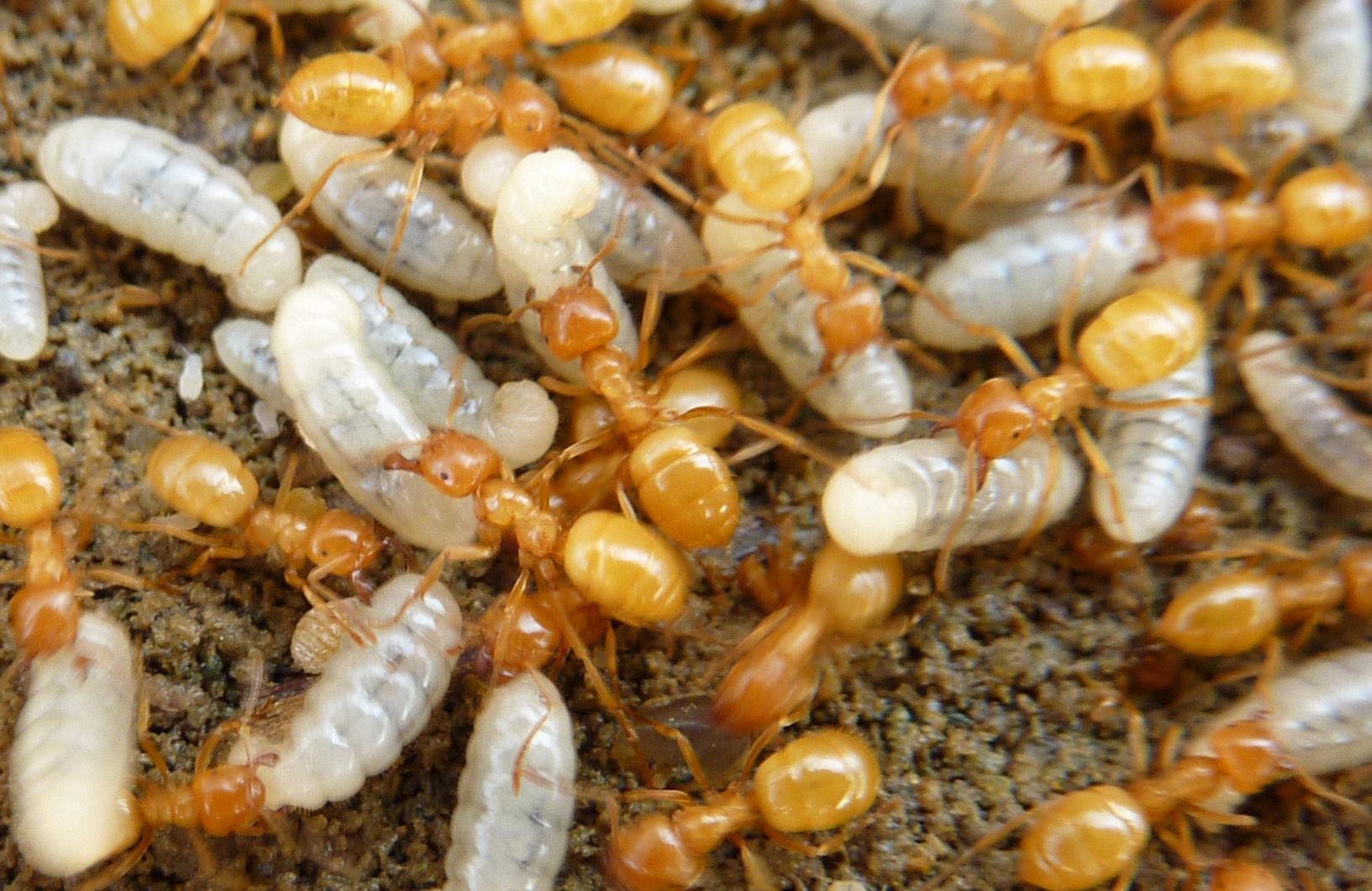Sorry for no posts in a bit. I've been busy trying to finalize the design for my new garden. Now that most of the plants have showed up I feel I've procrastinated on that topic long enough. I'll hopefully post images of the design on paper as well as photographed in person. For now though here are some ant pictures I've taken while digging about.
These are Lasius interjectus. Though what makes them that species isn't apparent from these photos. First there is the smaller eyes in comparison to the head. As well as having a very diminished looking maxillary palp (an antenna-like structure that hangs below the mandibles). This puts them in the claviger group and I should state when I say diminished looking maxillary palp what I mean to say is it's really really hard to see with the naked eye. In books you'll read it's 3 segments long and even then it's dam near microscopic.
Had the eyes been larger as well as the maxillary palp more visible, 6 segments long and a whole lot easier to see, that would put them in the umbratus group. Again assuming the worker color leans more towards orange and not brown.
Both claviger group and umbratus group can produce a citronella odor when disturbed though it's more common for species in the claviger group. Something else I've noticed is they don't always produce the odor when disturbed, and I'm not sure why this is. I've opened the same colony time and time again and sometimes they get alarmed and freak out while other times they don't bother with it at all.
In the US the two most common claviger group species are Lasius claviger itself and Lasius interjectus. The main difference between these two as far as the workers are concerned is the arrangement of hairs on the gaster (abdomen). If they're messy and almost randomly placed all over then it's L. claviger itself. If the hairs are more neatly arranged in lines going left to right then it's L. interjectus as I've photographed above. You can sort of make this out by zooming in on the pictures above.
It's worth noting though that the US and Canada has about 30 or so species of Lasius that all have orange workers, all have queens that are social parasites (at least those not in the flavus group), and are all almost completely subterranean root aphid farmers. This is an excellent example of redundancy in nature. Getting a correct ID on these ants can be a living metaphor for splitting hairs.

